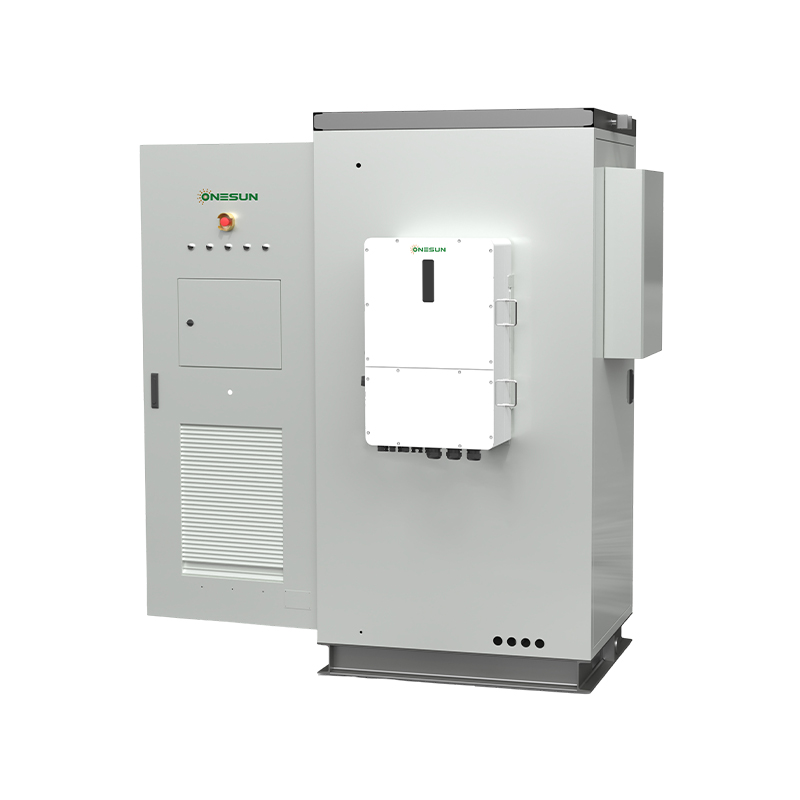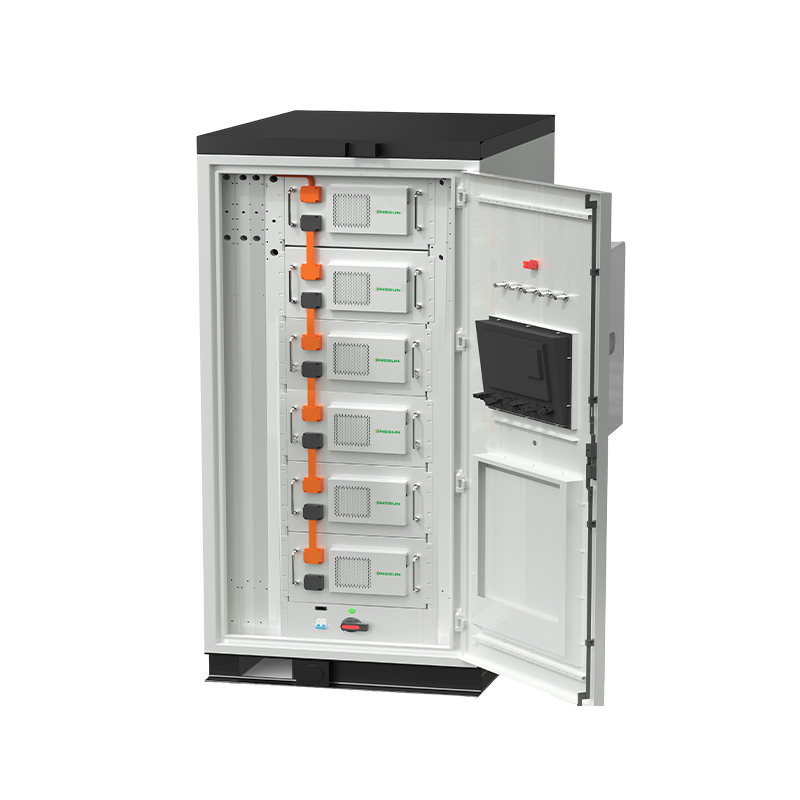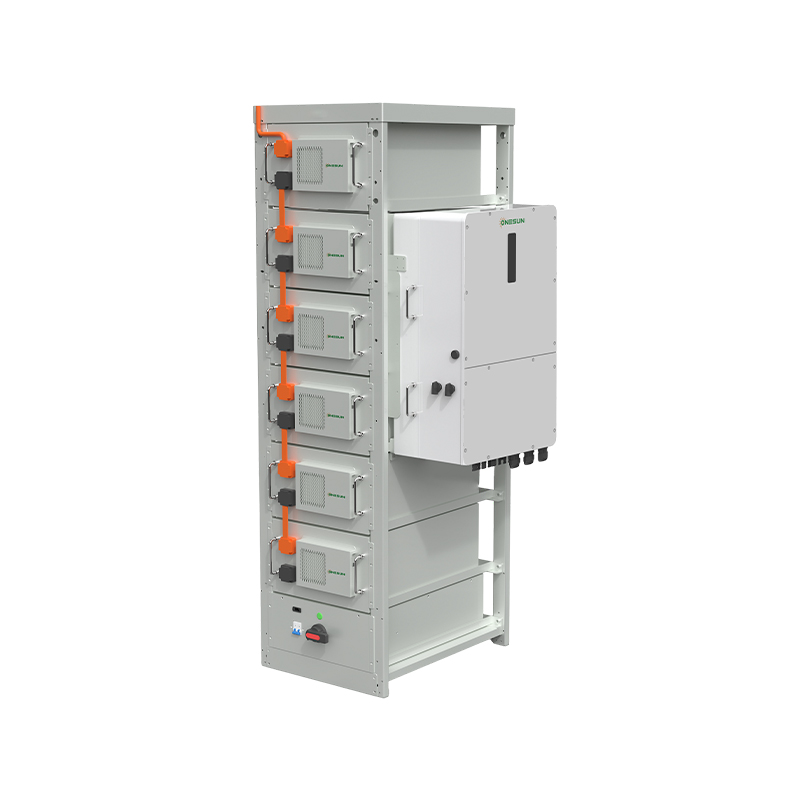
The Secret Weapon For SMES To Defeat Power Companies
Publish Time: 2025-09-24
ONESUN 20KW/30KWH Energy Storage System Empowers High-Reliability, Low-Cost Power Solutions for SMEs and Distributed Energy ProjectsAs global energy transition and carbon neutrality goals accelerate, the demand for energy storage systems in commercial and industrial sectors is evolving from "backup power" to "holistic energy management hubs." ONESUN has launched its 20KW/30KWH Commercial & Industrial Energy Storage System, leveraging lithium iron phosphate (LFP) battery technology, modular architecture, and an intelligent management platform to deliver a turnkey solution for peak shaving, emergency backup, energy optimization, and cost reduction in small-to-medium factories, data centers, telecom base stations, and microgrid projects.Technical Core: Safety, Durability, and Ultra-Efficiency1. LFP Batteries: Dual Assurance of Safety and LongevityThe system utilizes Grade-A LFP cells, validated for 6,000 cycles at 80% depth of discharge (DOD)—over 10 years of operational life, far exceeding traditional lead-acid batteries' 2,000-cycle limit. The LFP chemistry’s thermal stability, combined with an IP54-rated enclosure, enables reliable performance in temperatures ranging from -20°C to 55°C, eliminating thermal runaway risks.2. Bi-Directional Power Conversion System (PCS): Millisecond-Level Response for Uninterrupted PowerThe integrated 20KW bi-directional PCS supports three-phase AC380V/50Hz output, enabling seamless switching between PV charging, grid charging, and load supply. Its millisecond-level response ensures zero downtime for critical loads (e.g., servers, production lines), meeting Tier III data centers’ stringent UPS requirements.3. 95% System Efficiency: Translating Energy Conversion into Cost SavingsBy adopting a high-frequency isolation topology and dynamic MPPT algorithms, the system reduces energy loss to below 5% during charge/discharge cycles. For businesses employing a daily two-cycle (peak-valley arbitrage) model, annual electricity cost savings can reach tens of thousands of dollars, with payback periods shortened to 3–5 years.Key Functions: Full-Scenario Energy Optimization1. Peak Shaving & Valley Filling: Cut Electricity Costs by 20%–40%The Energy Management System (EMS) analyzes real-time grid tariffs and load patterns, storing low-cost electricity during off-peak hours and discharging during peak demand. A manufacturing plant deploying this system reduced monthly electricity expenses by 32% while mitigating transformer overload risks.2. Emergency Backup: 99.99% Reliability GuaranteedConfigured with five independent battery modules, the system supports N+1 redundancy. Even if one module fails, it retains over 80% capacity. Combined with EMS fault self-diagnostics, maintenance teams can remotely locate issues via a mobile app, minimizing downtime.3. Microgrid & Off-Grid Operation: Pioneering Energy IndependenceIn remote or unstable grid areas, the system forms microgrids with solar PV and diesel generators. Its EMS power-balancing algorithm prioritizes solar consumption, supplementing residual demand with storage or diesel, reducing fuel use by over 40%.4. Demand Response (DR): Earn Revenue by Supporting Grid StabilityThe system integrates with grid dispatch systems, adjusting charge/discharge power in response to real-time signals. An industrial park project participating in DR programs earned over $11,000 annually in grid subsidies, enabling a "storage-as-a-service" business model.Design Highlights: Modularity, Intelligence, and Rapid Deployment1. All-in-One Cabinet: Installation in Under 2 HoursThe integrated cabinet houses batteries, PCS, EMS, and cooling systems within 1.2㎡, supporting indoor/outdoor floor-mounted installation. Factory-preinstalled cabling and connectors simplify on-site setup, slashing deployment costs.2. Intelligent Air Cooling: Balanced Temperature, Silent OperationVariable-frequency fans and optimized airflow channels maintain a ≤3°C temperature difference across battery modules. Operating noise stays below 55dB, complying with environmental standards for office and residential zones.3. Multi-Protocol Communication: Seamless Integration into Industry 4.0The EMS offers RS485/CAN/Ethernet interfaces, connecting to SCADA systems, PV inverters, or third-party platforms. Through Modbus TCP protocols, it integrates effortlessly into factory digital operation ecosystems.Case Studies: From Theory to Tangible ValueCase 1: E-Commerce Logistics CenterScenario: 10,000㎡ warehouse with 1,200kWh daily consumptionSolution: 2× ONESUN 20KW/30KWH systems + 200kW solar PVResults:38% reduction in grid electricity purchases annuall、4-hour cold storage backup during outages、$16,500 in DR subsidiesCase 2: Southeast Asian Telecom Base StationScenario: Off-grid island site with 8-hour daily diesel generator runtimeSolution: 1× ONESUN system + 50kW solar PVResults:65% diesel consumption reduction、12-year battery lifespan (1 cycle/day)、70% lower O&M costsEnergy Storage as a Service (STaaS) CommercializationWith virtual power plants (VPPs) and carbon trading markets maturing, ONESUN is shifting from equipment sales to energy operation models. Equipped with AI forecasting algorithms, the system autonomously optimizes charge/discharge strategies for participation in electricity spot markets. By 2026, cloud-connected storage projects are projected to generate 15%–20% additional revenue for clients.The ONESUN 20KW/30KWH Commercial & Industrial Energy Storage System redefines enterprise energy management with its "safe, efficient, and flexible" design. Whether reducing operational costs, ensuring power reliability, or exploring green transitions, it offers SMEs a quantifiable, sustainable pathway to energy independence. In the era of energy revolution, this system is not just equipment—it’s a strategic asset for carbon neutrality.



